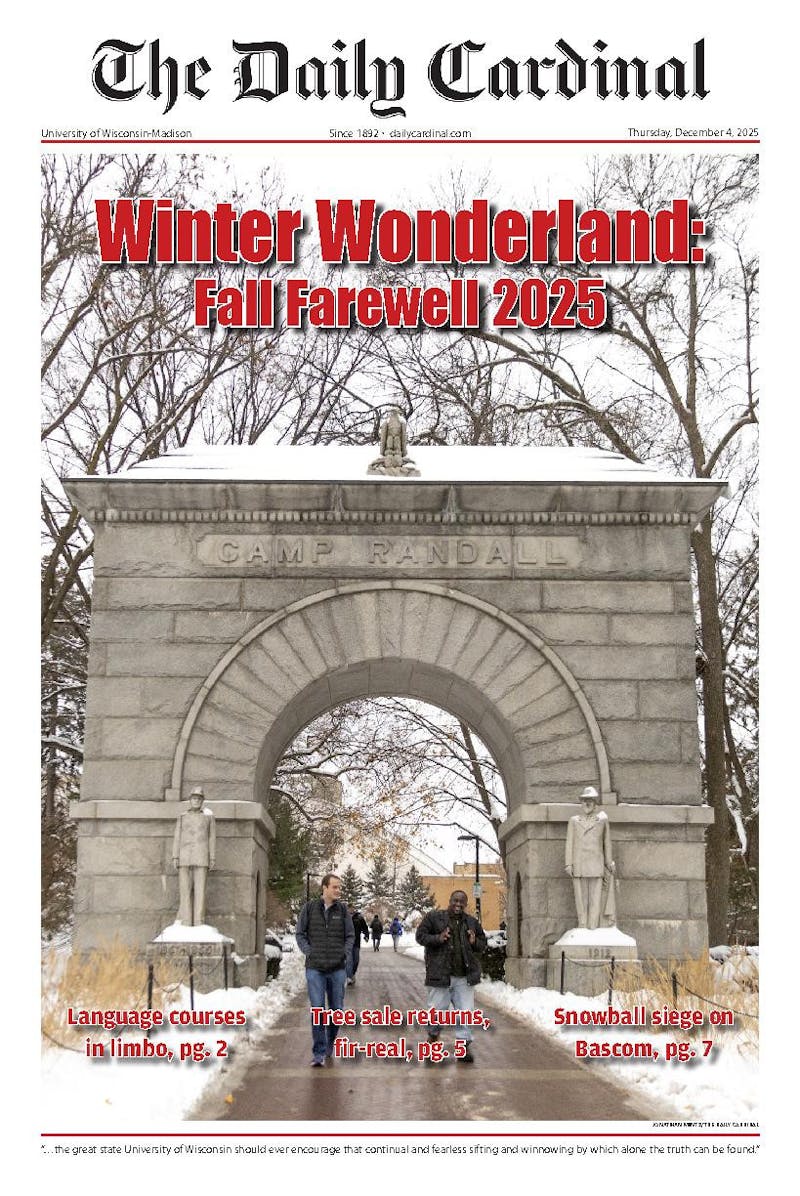While Title IX legislation encompasses all educational programs, intercollegiate athletics is most often referred to when the phrase \Title IX"" is used.
In complying with Title IX, UW-Madison has encountered dilemmas specific to this campus. From the demise of baseball to adding three women's sports in a four-year period, Wisconsin has faced Title IX head-on.
Why was baseball dropped after the 1990-'91 season? At the time UW's Athletics Department was $2.1 million in debt. In order to alleviate the budget deficit and bring the university back into the black, certain sports were eliminated.
The decision to drop baseball, along with men's and women's gymnastics and fencing was not easy, but was done out of necessity.
""We tried to do what we felt was right,"" UW Athletics Director Pat Richter said in an April 22, 1991, Daily Cardinal report. ""We felt this had to be done for the program to move forward.""
People did react with anger toward the decision, but not due to Title IX. Rather it was out of disbelief that a university could deny athletes a chance to play some varsity athletics.
""I think life is full of human error,"" women's gymnastics coach Terry Bryson said in the same report. ""And [the Athletics Board] eliminated something of very high quality, and that's an opportunity for young people to compete.""
Thus, the choice to cut baseball was not due to Title IX proportionality. Yet, some good came out of the situation as the loss of these sports, along with the recent success of the football team, allowed the Athletics Department to fiscally recover.
However, in order to return baseball today, female sports would have to be added because of the Title IX proportionality rule. According to Cheryl Marra, Wisconsin's sports administrator and associate athletics director, the current athletic budget is not capable of handling two or three additional fully funded sports to comply with Title IX.
When women's softball and lightweight crew were added for the 1995-'96 season and ice hockey created for the 1999-2000 season, there were certain criteria that were used to aid in the university's decision to add these sports.
Wisconsin first investigated whether the sport was sponsored by the Big Ten, Western Collegiate Hockey Association or another governing body with which UW is directly involved. According to Marra, a commission was created to find sports on campus that would answer the following questions:
Are the sports in question growing on a national or regional scale? Are there emerging teams on the high school level in the state or a nearby state, such as Minnesota? Is it feasible to add the sport at a full level in order for it to be competitive?
According to Marra, this last question was the key point for the commission when considering the addition of a sport.
""When we added [women's softball, ice hockey and lightweight crew], we added them at the highest level with full scholarships and full facilities,"" Marra said.
For each sport that was added, most, if not all three questions were answered with a ""yes.""
When UW added women's softball, Wisconsin was the only Big Ten university that did not have an intercollegiate team.
By 1998, women's ice hockey was growing rapidly in the Midwest, partially due to the popularity of the USA Olympic gold medal-winning ice hockey team.
Finally, with crew already established on campus, it was easy to expand the women's crew team by creating a women's lightweight crew squad.
With the continued growth of the female population on campus, the proportionality requirement has changed. According to the Higher Education Act report, a self-report by the university, the last four years show a fundamental shift in the percentage of female athletes at Wisconsin.
In 1997, 13,524 female undergraduates attended UW, or 52.8 percent of the undergraduate population. Conversely, female athletes constituted only 42.2 percent of student-athletes competing for Wisconsin at the intercollegiate level.
The following year, female undergraduates increased by 0.2 percent on campus. But female student-athletes increased 2.3 percent.
With the addition of women's ice hockey in 1999-2000, the proportions drastically changed as the number of female athletes increased to almost 50 percent of total athletes on campus.
The 2000-'01 HEA report, released Oct. 10, shows dramatically how far female athletics has come on the UW campus. While female undergraduates currently account for 53.1 percent of the student population, 52.6 percent of UW's athletes are female. Overall, UW-Madison has made great strides in complying with the proportionality aspect of Title IX.
While the addition of softball, ice hockey and lightweight crew has added to the athletics prominence of the university, a relatively new development at Wisconsin is marketing and promotion of athletes and athletic squads.
| Fundamentals Title IX at UW The female perspective Media impact The football question |
Created in 1992, the marketing aspect of Wisconsin's Athletics Department had modest goals'get people to Camp Randall Stadium.
""When we first started in '92, our No. 1 goal was to sell tickets to Wisconsin football,"" UW Director of Marketing Mike Unitan said.
Since then, marketing has broadened to include more sports. While the decision was made to extend the promotion of athletics on campus, where the advertising goes depends on where sponsors want their advertising, according to Unitan.
""For the most part, [marketing] is not driven by gender equity,"" Unitan said. ""If it's a good idea, then we'll go with it. Many times, what the sponsor wants is what we do.""
While athletics teams are priority, there are exceptions to that rule. When former star tailback Ron Dayne was on campus, the marketing department ran a Heisman Trophy campaign specifically so that the nation was able to recognize him.
Though not on the same large scale as Dayne's campaign, female athletes have also received individual national attention. From former UW women's basketball player Robin Threatt to UW track-and-field star Suzy Favor, female athletes have garnered similar individual attention.





